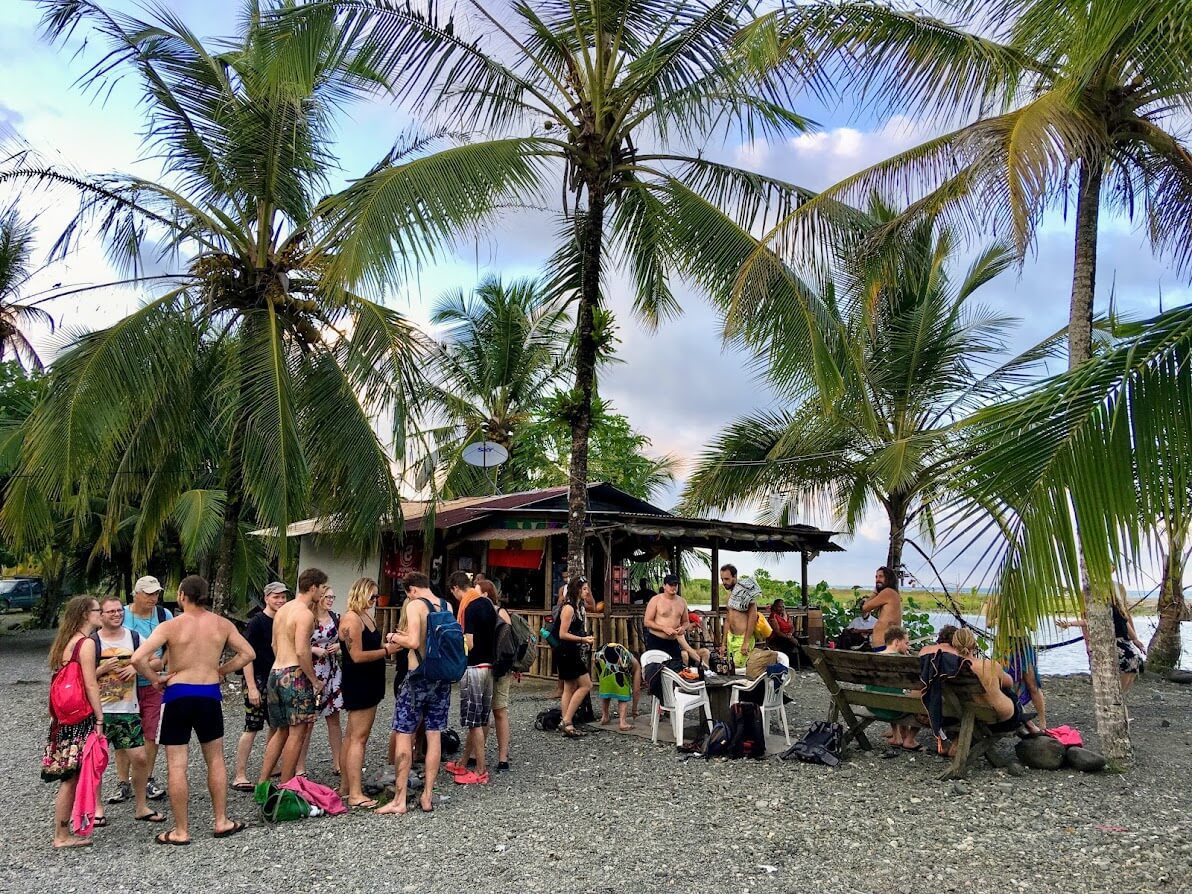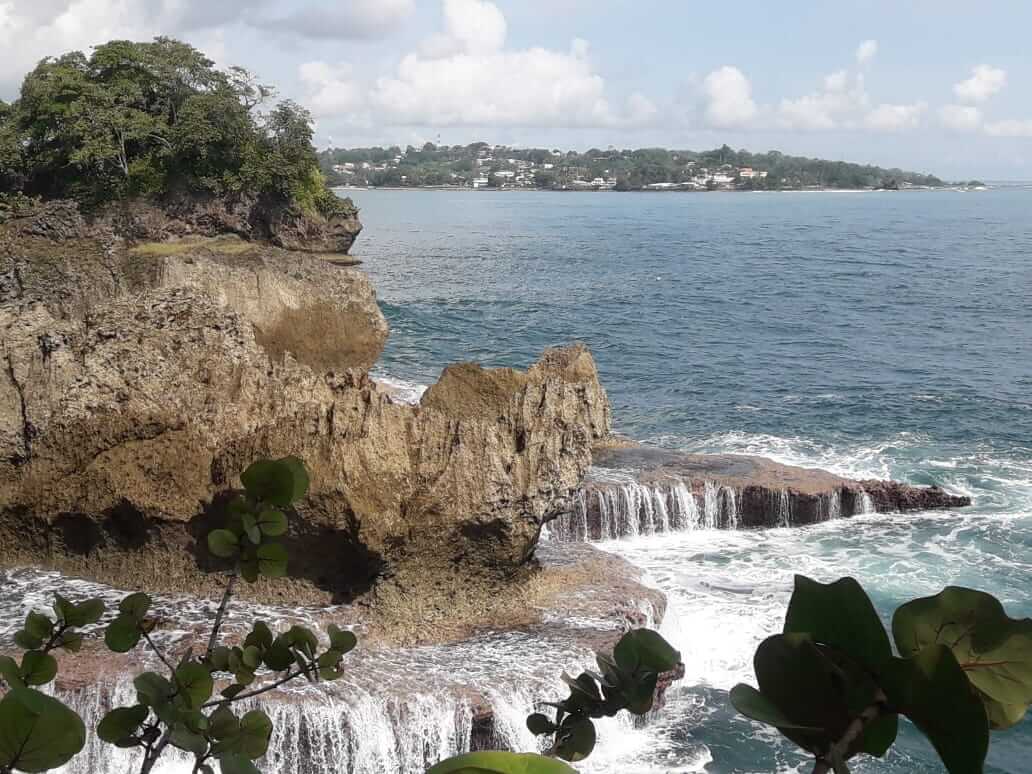Contents
- 1 Isla Uvita Island Limón | Learn about the history and The Caribbean Culture of Costa Rica
Isla Uvita Island Limón | Learn about the history and The Caribbean Culture of Costa Rica
Discover and explore Ilsa Uvita, the Island in front of Limón city, and learn about what the entering of Christopher Columbus inherited to the history of the Caribbean Coast and its importance to Costa Rica’s history.
How the Caribbean culture started significantly differs from the rest of Costa Rica.
Isla Uvita Limon Tour – What to expect?
Let’s meet around 9.00 am in the small inlet of Playa Piuta, a beautiful small beach on the coastline of Limón. Playa Piuta is a phenomenal party Area, with three big discotheques and various sports fields.
It is a place where the local Limonenes folks come together, a great occasion to experience a part of local Caribbean Culture, day and night.
A boat will pick us up and bring us to the Island in about 15 minutes. There are already some pretty sites from the ship to see as we near the Island. On one side, the uninhabited place is next to a city of nearly 100,000 inhabitants.
Once we arrived at our destination, we looked around and sat on the empty beach. Eat the sweet Pineapple, Papaya, and other fruits we brought while the guide tells us about the Island’s history. The feel of solitude gets to you as we relax on the white sand and hang on the beach.
After a while, we start on an excursion around the ‘abandoned rock,’ running into some historical places like the old monastery and the bathing place for the Leporidae. Most impressive are the gorgeous viewpoints along the route and the beautiful rock formations with their foundations on coral reefs hit by waves of blue water.
Once we make it around, all that is left to do is either swim or hang around a bit more and wait for the boat to pick us up again. Bring us back to civilization.
Duration
Approximately: 3 hours.
What do you bring with you?
Sunscreen, drinking water, and eventually, rain cover or long sleeves for the boat trip. It can sometimes be challenging to make a valid weather forecast. If the weather allows, a nice campfire will be made.
Our Tour guides
Our guides are genuinely local and experienced tour professionals. They harbor a sincere and profound passion for nature and wildlife, deeply respect Costa Rican Culture, are thoroughly prepared, and are licensed by the ICT (Costa Rican Tourism Institute).
They love to show you Uvita Island and tell you about the history and landing of Christopher Columbus in 1502. And the influence on the Culture of the Caribbean side of Costa Rica.
Pricing
For pricing, see the shop product page and the “Additional Information” Tab; minimum group size [adults] = two persons. For youngster discounts, visit the product page!
What is Included
The transfer by boat to Isla Uvita, a local dedicated, experienced tour guide, and fresh fruits.
Meeting Point and Direction
Puerto Limón, a small inlet of Playa Piuta, is a beautiful small beach at the coastline of Limón city.
About Isla Uvita – Limón
Uvita Island, or Isla Uvita (Spanish: “little grape island”), officially Isla Quiribrí, is a small Island with a rich Culture. It has a size of not even 4 acres.
The location is less than a mile from offshore Limón and can be reached by boat. It is currently uninhabited, but at least one structure on the island and a small dock. It is possible to visit the island by renting a boat and a driver at one fishing dock on the Cieneguita River.
Uvita has had several names over the years in English; these include Grape Cay, Grape Island, and Uvita Island in Spanish. The Cariari Indians called the island Quiribrí. In 1986 the National Commission of Nomenclature approved the restoration of the name Isla Quiribrí.
The Academy of Geography and History of Costa Rica asked that the Commission and the Municipality of Limón publish the name change in 2002 during the 500th anniversary of the arrival of Christopher Columbus on the island.
Isla Quiribrí is now the official name but is seldom used; locally, the island is still called Isla Uvita.
Isla Uvita and Christopher Columbus
Christopher Columbus anchored his ships on the island for repairs during his final voyage to America in 1502 and gave the island the name of La Huerta.
The two-week visit allowed contact with the Indigenous people, who welcomed the Europeans dressed in clothing of gold, which was the reason that some mistakenly attributed to Columbus the naming of Costa Rica (Spanish: “rich coast”), a name which was first used by the Royal Audience of Panama in 1538.
About the Tour, a rich explanation of what the entering of Christopher Columbus, inherited to the history of the Caribbean Coast of Costa Rica, and how the Caribbean Culture started which is quite different from the rest of Costa Rica and its influence of Costa Rica history.
Presbere, strongest, Indigenous Warrior
Pablo (originally Pabru) Presbere was an indigenous king of the Suinse community in the region now known as Talamanca. He is remembered as the indigenous leader who led the aboriginal insurrection against the Spanish authorities in 1709.
The rebellion by Presbere was supported by all the natives of Costa Rica from Cerro Chirripo. This way allowed the Aboriginals to regain control of the territory of Talamanca, which became a refuge area during the colonial period of Costa Rica.
He was known as the most feared warrior in Talamanca. Some sources argue that his original Indian name, “Pabru,” means “chief of the macaw,” and “Presbere” would be “Place of running waters.”
The reason for the indigenous uprising of 1709 was the interception of a letter by Presbere ordering the uprooting of the Talamanca Indians from their lands. Presbere attacked this intervention.
After attacking Urinama, Presbere’s army went to Chirripó and fought back. The Indians in arms burned fourteen churches founded by the missionaries, the convents, and townhouses and destroyed the images and sacred objects of the friars.
They did this because these symbolized the threat they represented to their traditional order, the legacy of the indigenous people of Talamanca.
The authorities of Cartago decided to carry out a punishment expedition, and Presbere went to take refuge in the village of Viceita with all his people. After a brutal scuffle, Presbere was captured, together with more indigenous leaders of Talamanca.
In Cartago, Presbere and the other indigenous leaders were imprisoned, but Presbere did not admit any responsibility. He refused to give up any of his fighting companions. But was seen by many indigenous people as the leader of the insurrection. On July 1, 1710, Presbere was sentenced to death by Garote.
After the insurrection of Pablo Presbere, the indigenous people of Talamanca reinforced their identity and dominion in that territory, increasing their function as a refuge zone for the aborigines who escaped Spanish rule.
In a certain way, this allowed the subsistence of these cultures’ traditions, identity, and language to this day. The rebellion of Presbere is still considered the maximum protest action of the Talamanqueño indigenous before the Spanish submission, which allowed Talamanca to recover its independence and sovereignty.
Isla Uvita Limón | Discover the Island. Learn about Columbus and Presbere



Take your camera – Make your Own Video Memory
Group on Tour, Isla Uvita, Limón, Costa Rica


















